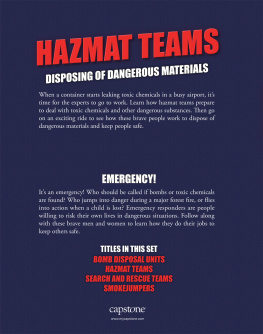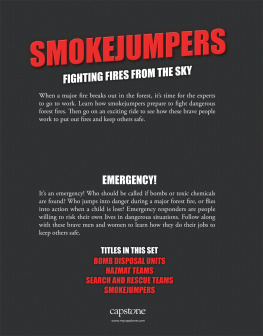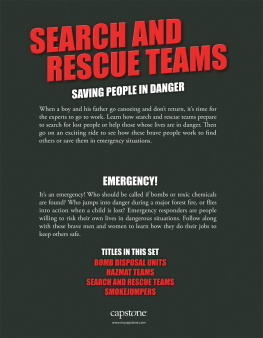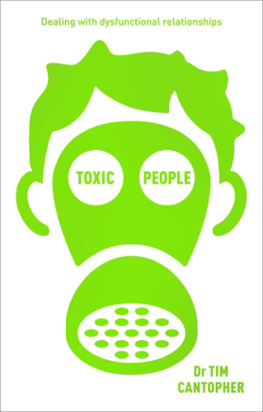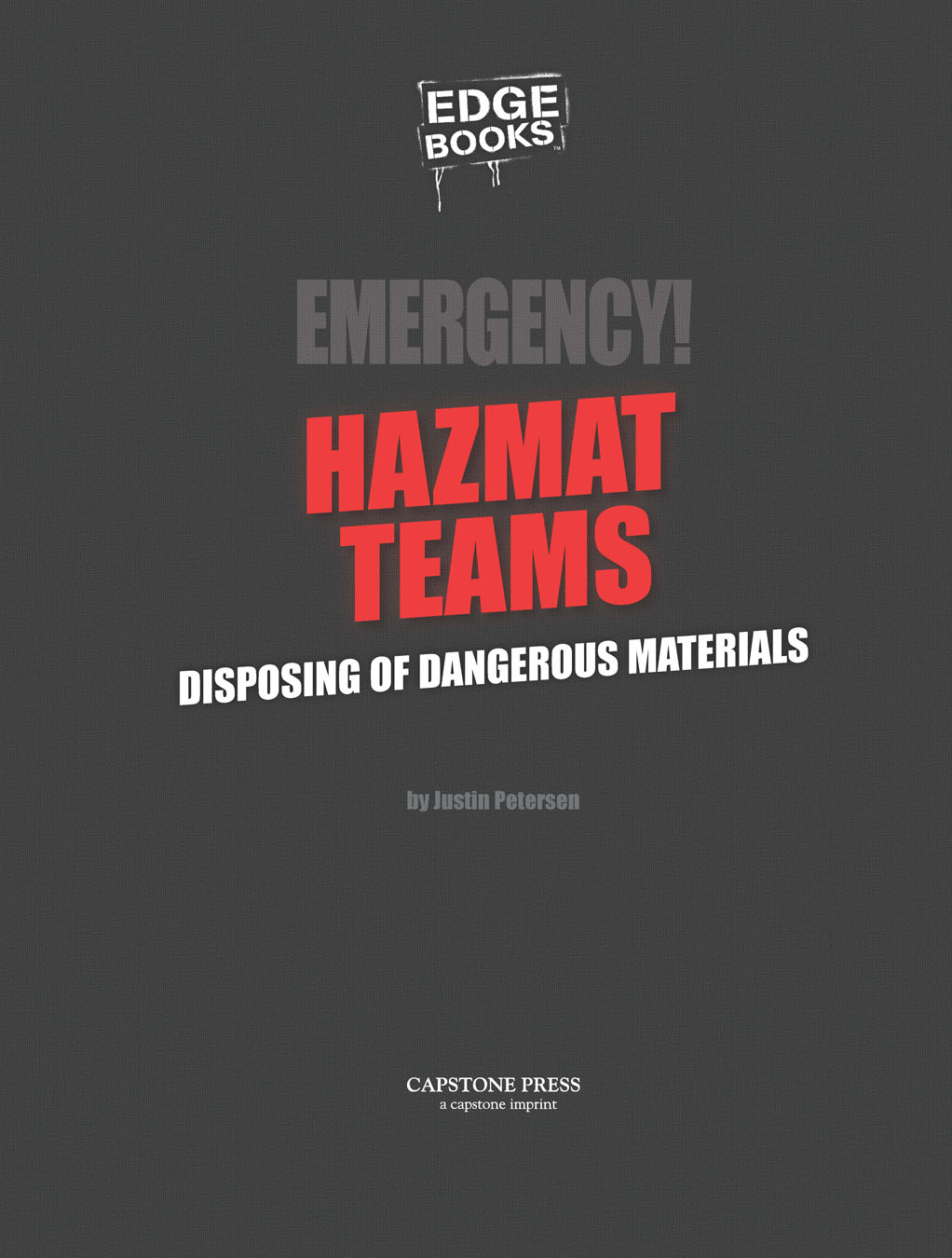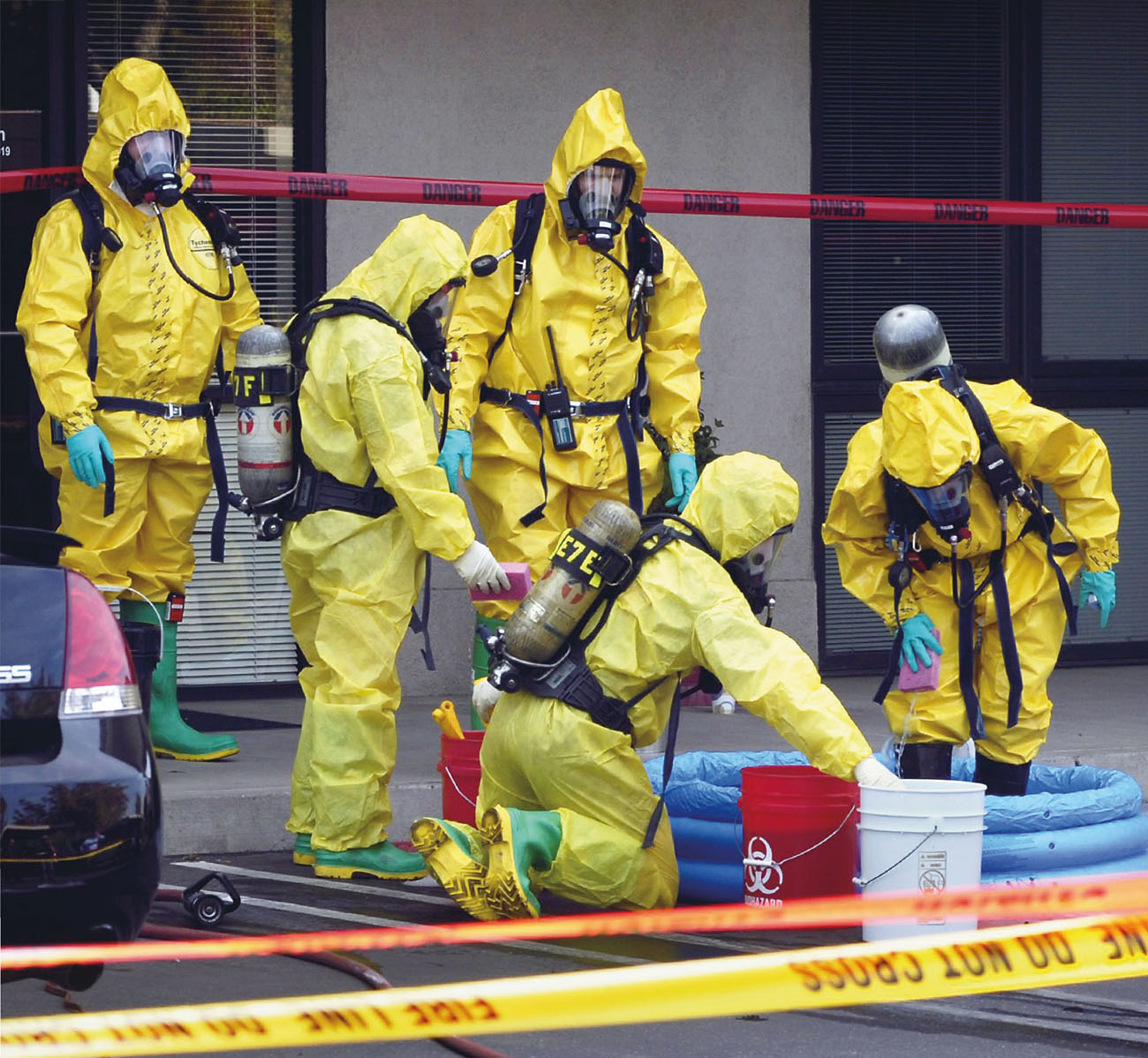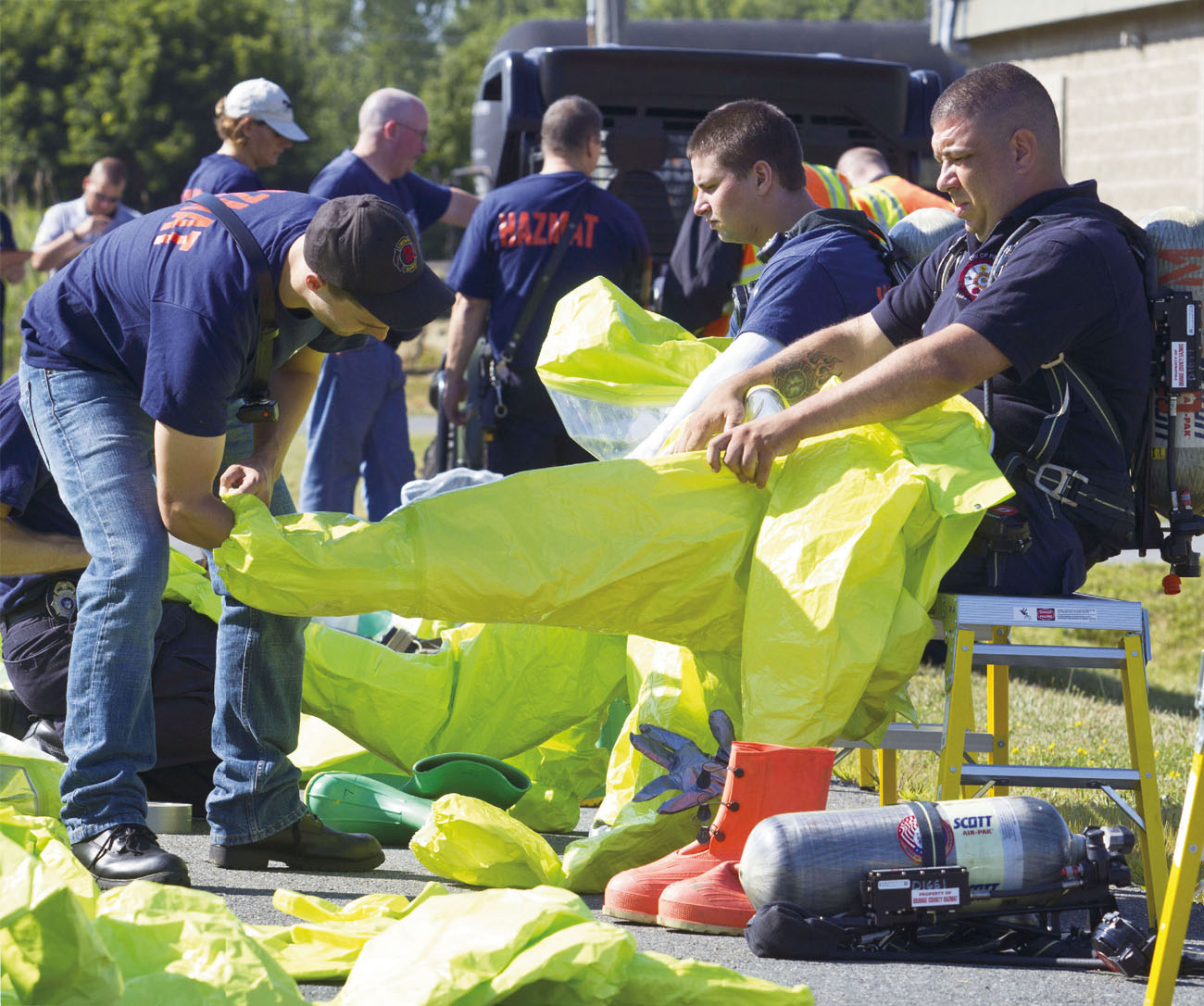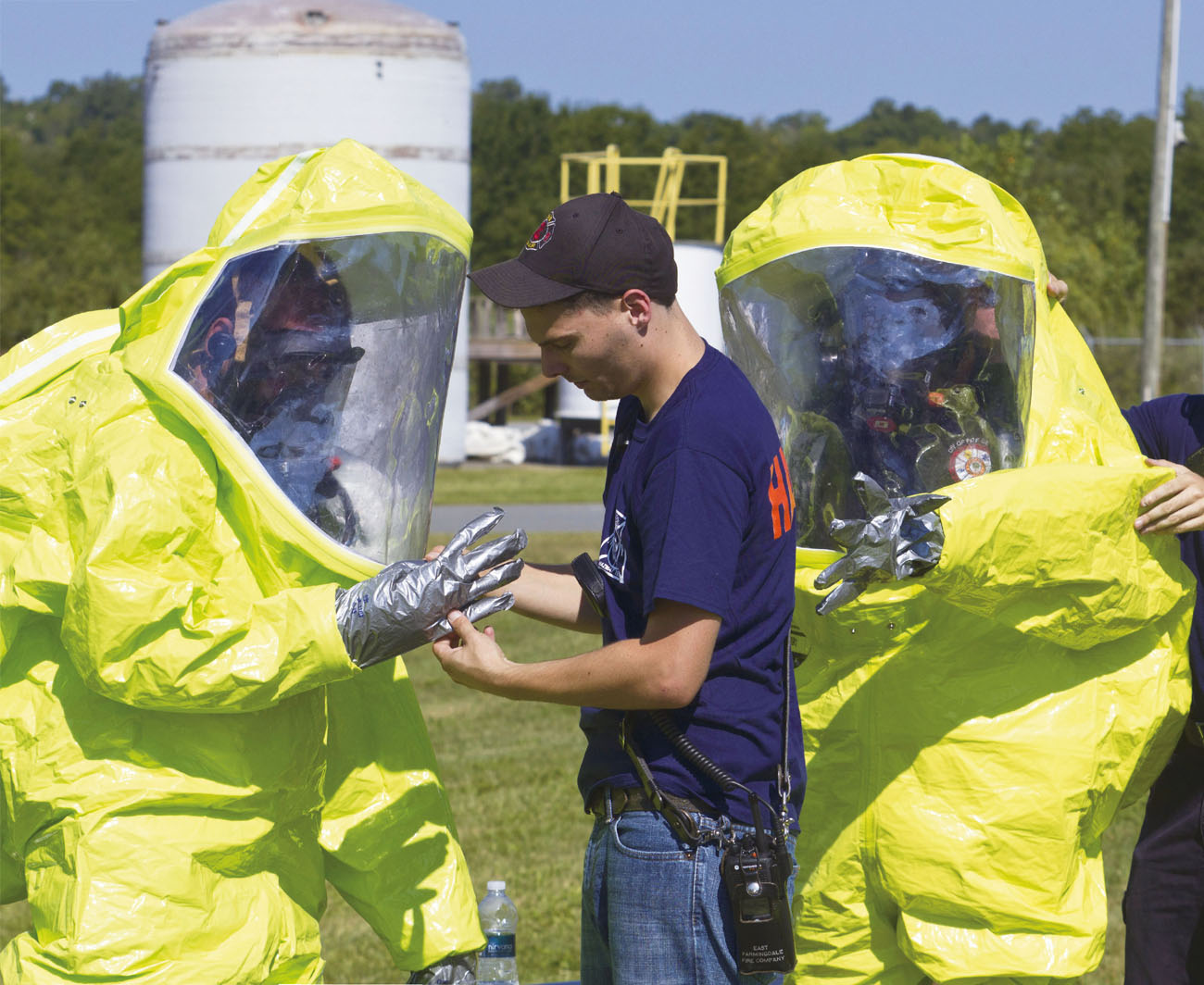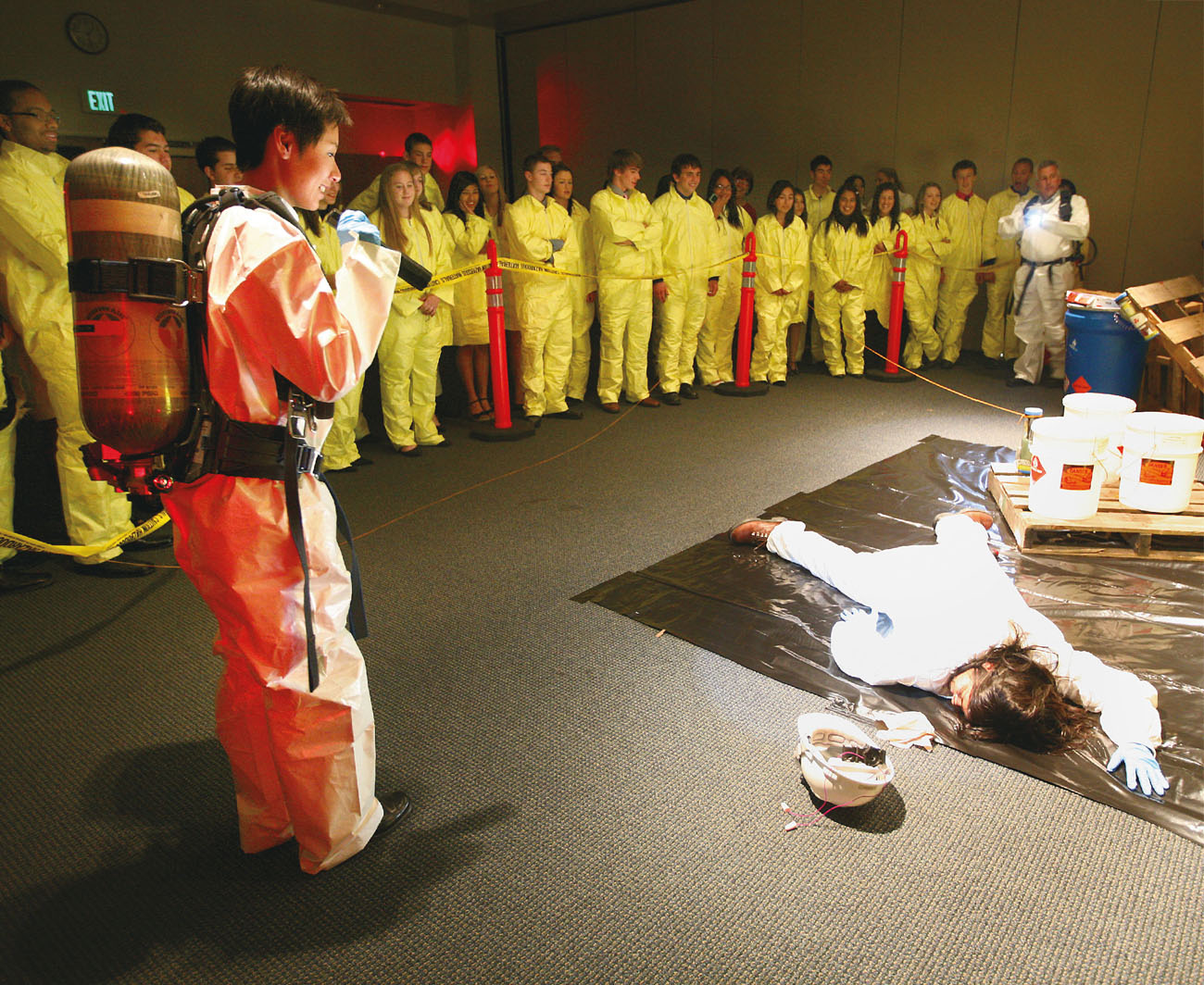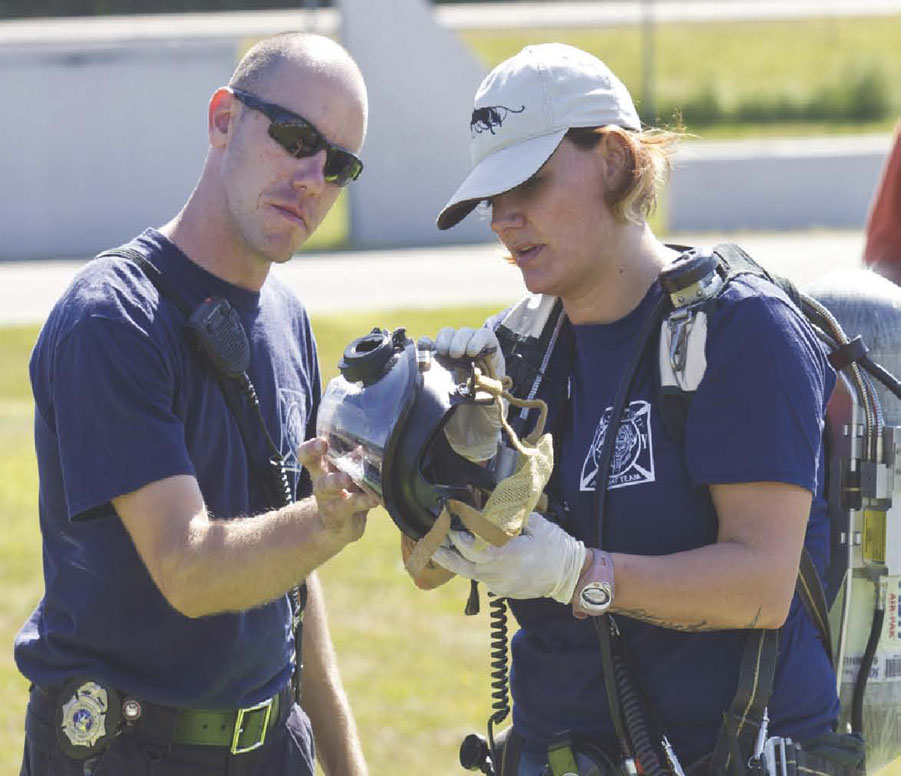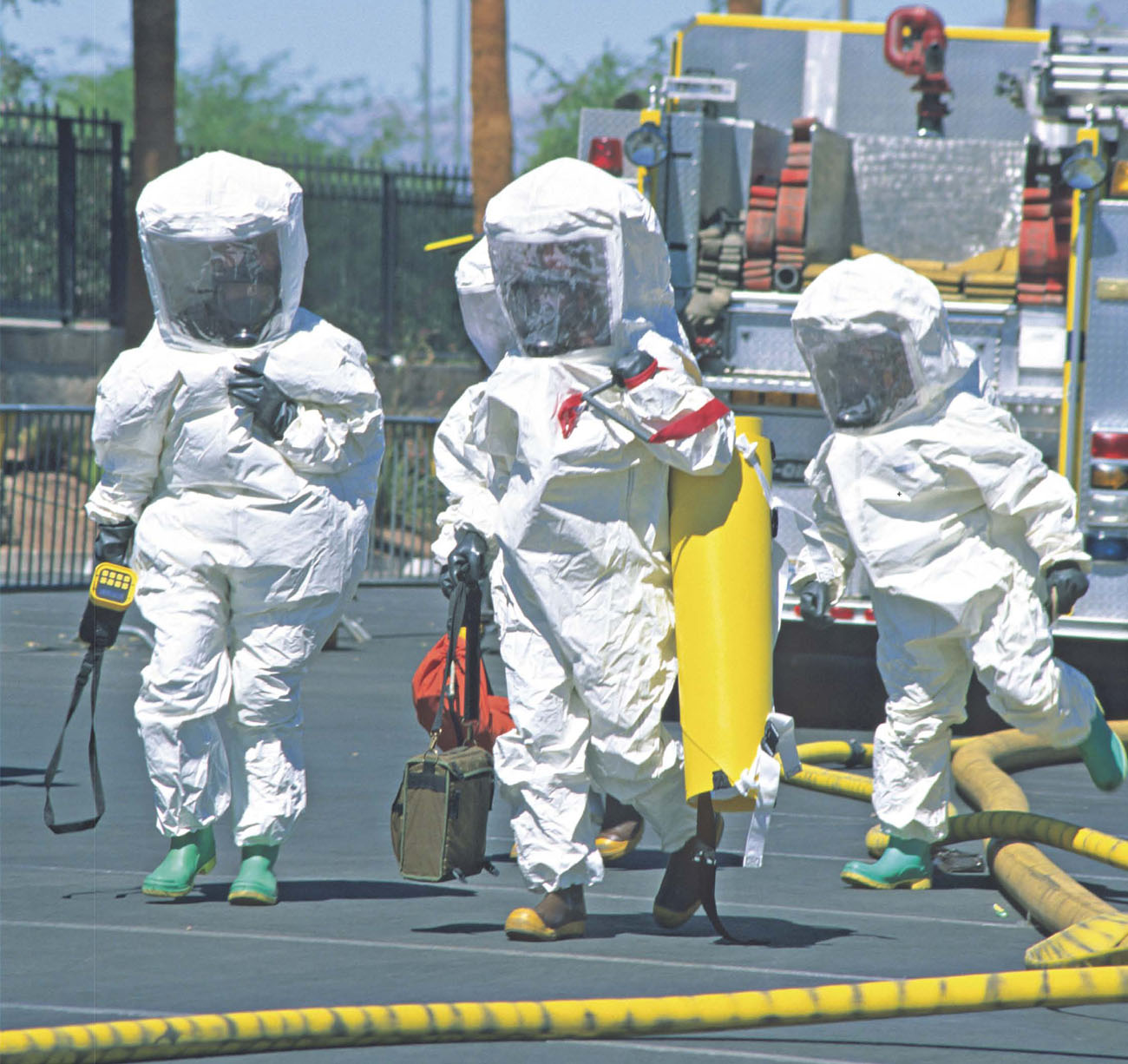WHEN CHEMICALS REACT
A small crowd is gathered around a burning warehouse. When firefighters notice a strong equipment, known as PPE. This includes gloves, boots, helmets, hoods, and bright yellow hazmat suits.
The wind changes course and starts to blow harder. A moment later, a hazmat crew member points to the northwest corner of the building. Another fire has started. This one is dangerously close to a chemical facility. Containers full of highly flammable chemicals are stored there.
Move away from the building! the supervisor yells into a megaphone. Everyone begins to run. From a distance, the crowd watches and waits. A few seconds later, the entire building explodes. Only a hazmat team can manage this kind of emergency.
Hazmat response units are specially trained to handle incidents involving dangerous substances. The units are often based in local fire departments. These skilled and well-trained professionals bravely risk their own lives to save others.
Hazmat workers must know how to prepare for many different situations, such as those that may require oxygen tanks.
Chapter 1
TRAINING FOR THE JOB
Hazmat workers train in all areas of emergency response..
Nearly all hazmat work is done under dangerous conditions. That is simply the nature of the job. Being able to identify a variety of hazardous materials is the most basic PPE? Having knowledge of which materials are flammable, unsafe to touch, or toxic to breathe is critical. It can mean the difference between life and death. Hazmat workers complete extensive training to learn how to identify dangerous substances and what to do with them.
Becoming familiar with the equipment is an important part of hazmat training.
FACT:
The first hazmat team became operational in Jacksonville, Florida, in 1977.
TRAINING COURSES
In order to begin training, hazmat candidates must be in top physical condition. Their bodies need to withstand very hot temperatures inside their PPE. In addition, being in good physical shape makes it safer for them to come into contact with hazardous materials.
Trainees begin by learning the dangers associated with every type of hazardous material. Candidates must then learn to use a variety of disposal of materials.
Depending on the type of hazmat team and the location, specialized courses may be required. For example, the Rail Car Safety course may be a requirement for hazmat teams working near railroads. Terrorism or Weapons of Mass Destruction (WMD) training is a likely requirement for a hazmat technician in a major city.
Upon completion of their training, hazmat specialists receive an Occupational Safety & Health Administration (OSHA) certification. This means they have completed all necessary training to safely work with hazardous materials.
Hazmat workers have help getting into their PPE to ensure that the suits are properly sealed and safe.
Personal Protective Equipment
In addition to the standard hazmat suit, there are many other types of PPE, and each has a specific use.
USES FOR PPE:
- Respiratory protection Responders use respirators to protect against breathing toxic or contaminated air.
- Eye and face protection Goggles and plastic face guards protect against flying fragments, hot sparks, and chemical splashes.
- Skin protection Hoods, booties, and gloves are taped to the hazmat suit so that skin is never exposed to harmful substances.
- Noise protection Earplugs or earmuffs help prevent damage to hearing due to loud noises.
TRAINING EXERCISES
Training exercises are an important way for a hazmat unit to prepare. Tabletop exercises introduce candidates to a variety of hazmat dangers. These exercises are active discussions held around a large table with the trainer directing the topics of conversation. The candidates begin by assessing an incident. They then work together to create an action plan. These exercises allow participants to apply what theyve learned without the stress of a real-life incident. There is time for trainees to ask questions and take notes.
Training exercises help prepare hazmat workers for real-life emergencies.
FACT:
The term HAZWOPER refers to all training that deals with hazardous waste operations and emergency response.
In a functional or full-scale exercise, a team of trainees responds to a mock emergency. Hazmat trainers go to great lengths in setting up these fake emergencies. These exercises sometimes involve working with several organizations to safely create a realistic situation. For example, a team of trainees may arrive on the scene of a make-believe oil spill or a dangerous chemical leak. First, they quickly identify the hazardous materials involved. Then they assess the health and safety risks present. The trainees work as a team, carefully putting on their PPE as they develop a plan of action.
Trainees learn how to test their equipment to ensure that it is working properly.
Chapter 2
ON THE SCENE
Radioactive materials begin to leak from a medical shipment in the receiving room at an airport. These dangerous materials need to be contained, or thousands of people will be put at risk. The airport is alerted, and people begin to panic. Minutes later, the local hazmat first responders unit arrives and takes control of the situation. How were they able to get there so fast? How do they prepare to safely contain an incident as soon as they arrive?
First, an airport employee called 911 when he saw a strange liquid oozing from an open container. The container had been labeled with a warning label, which allows people to quickly identify dangerous substances.
After the airport employee called 911, the local emergency communications center contacted a hazmat team at the local fire department. That team quickly assembled the appropriate PPE for a radioactive leak. They knew exactly what to pack because they had trained for scenarios just like this one. Then they jumped into a specialized hazmat vehicle. This vehicle contained a variety of safety equipment. Many hazmat vehicles, for example, contain mobile laboratories. These allow hazmat workers to test materials on site. They also contain equipment such as ventilation hoods and eye wash stations to deal with accidental exposure.

